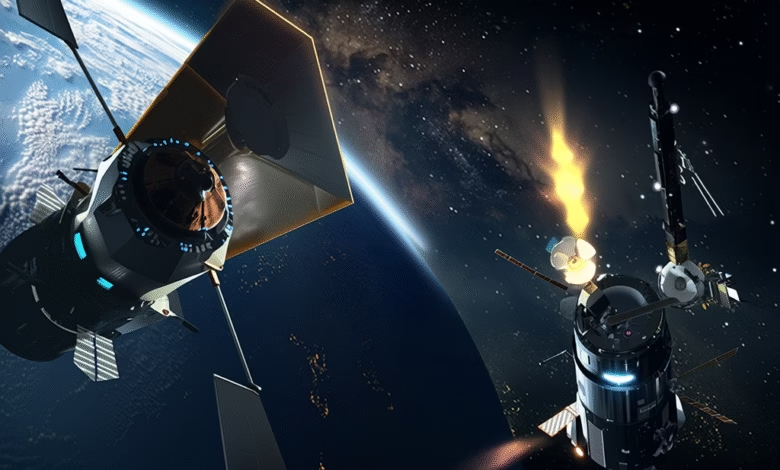China Leads in Next-Gen Space Reuse Technology

▼ Summary
– Two Chinese satellites, SJ-21 and SJ-25, likely docked in geosynchronous orbit, marking a potential high-altitude orbital refueling attempt.
– SJ-25 is designed for fuel replenishment and life extension, while SJ-21 previously demonstrated space debris mitigation by towing a defunct satellite.
– These technologies are dual-use, with both civilian applications and potential military uses like disabling enemy satellites.
– The US Space Force is also exploring orbital refueling, planning a demonstration with Astroscale as early as next year.
– US Space Force satellites monitored the Chinese docking, indicating strategic interest in China’s advancing space capabilities.
China has taken a significant leap forward in space technology with two satellites successfully docking in high Earth orbit, marking a potential breakthrough in orbital refueling capabilities. The Shijian-21 (SJ-21) and Shijian-25 (SJ-25) satellites appear to have connected in geosynchronous orbit approximately 22,000 miles above Earth, according to independent satellite trackers analyzing publicly available data. The maneuver represents a major step in demonstrating technologies that could extend satellite lifespans and reshape space operations.
While Chinese authorities have remained tight-lipped about recent activities, previous statements shed light on the satellites’ objectives. SJ-25, launched earlier this year, was explicitly designed to test satellite refueling and life-extension technologies, as confirmed by its developer, the Shanghai Academy of Spaceflight Technology. Its counterpart, SJ-21, made headlines in 2021 when it successfully relocated a defunct Beidou navigation satellite to a higher “graveyard” orbit, a move China framed as an effort to reduce space debris.
The implications of these advancements extend beyond civilian applications. Such dual-use technologies could serve both peaceful purposes and military strategies, including the ability to approach or disable other nations’ satellites. This has drawn attention from the U.S. Space Force, which is actively exploring similar refueling concepts to prolong the operational life of military satellites constrained by limited fuel reserves.
While the U.S. military has partnered with companies like Astroscale to test orbital refueling as early as next year, China’s recent activity suggests it may be pulling ahead in this critical space race. The close proximity of the SJ-21 and SJ-25 satellites has not gone unnoticed, two U.S. Space Force surveillance satellites, part of the Geosynchronous Space Situational Awareness Program (GSSAP), repositioned themselves nearby, likely gathering intelligence on the operation.
The development underscores the growing competition in space, where technological advancements could redefine both commercial and defense strategies. With orbital refueling still in its infancy, China’s latest maneuver positions it as a key player in shaping the future of space sustainability and security.
(Source: Ars Technica)
